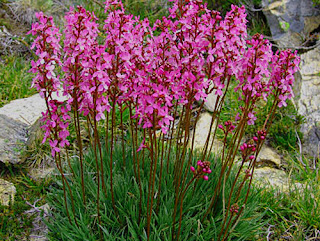Carnivorous plants will be plants that infer a few or the greater part of their supplements from catching and devouring creatures or protozoans, commonly creepy crawlies and different arthropods. Rapacious plants have adjusted to develop in places where the dirt is thin or poor in supplements, particularly nitrogen, for example, acidic swamps and shake outcroppings. Charles Darwin composed Insectivorous Plants, the main understood treatise on savage plants, in 1875.
Genuine carnivory is thought to have developed autonomously nine times in five unique requests of blossoming plants, and is spoken to by more than twelve genera. This arrangement incorporates no less than 583 species that pull in, trap and murder prey, engrossing the subsequent accessible nutrients. Additionally, more than 300 protocarnivorous plant species in a few genera demonstrate a few yet not these qualities.
The Tropical Pitcher Plant
The primary concern that recognizes the tropical pitcher plant,
family Nepenthes, from different rapacious vegetables is its scale: the
"pitchers" of this plant can reach over a foot in tallness, perfect
for catching and processing bugs, as well as little reptiles, creatures of land
and water, and even warm blooded creatures. (The bound creatures are pulled in
by the plant's sweet fragrance, and once they fall into the pitcher absorption
can take as long as two months!) There are around 150 Nepenthes species
scattered around the eastern side of the equator; the pitchers of some are
utilized as drinking glasses by monkeys (which are too expansive to end up on
the wrong end of the natural pecking order).
The Cobra Lily
So named in light
of the fact that it would appear that a cobra going to strike, the cobra lily,
Darlingtonia californica, is an uncommon plant local to the chilly water swamps
of Oregon and northern California. This plant is really fiendish: not
exclusively does it draw creepy crawlies into its pitcher with its sweet scent,
yet its shut pitchers have various, transparent false "ways out" that
fumes its frantic casualties as they attempt to get away. Strangely,
naturalists still can't seem to recognize the regular pollinator of the cobra
lily; obviously, some kind of creepy crawly assembles this present bloom's dust
and lives to see one more day, however it's obscure definitely which.
The Trigger Plant
Regardless of its strong sounding name, it's hazy if the trigger plant (family Stylidium) is truly meat eating, or basically endeavoring to shield itself from troublesome bugs. A couple of sorts of trigger plants are outfitted with "trichomes," or sticky hairs, which get little bugs that have nothing to do with the preparation technique - — and the leaves of these plants release stomach related proteins that continuously separate their dreadful setbacks. Pending further research, be that as it may, we don't know whether trigger plants truly get any sustenance from their small, wriggling prey, or are simply shedding undesirable visitors.
Dionaea
Muscipula
Dionaea Muscipula, all the more ordinarily known as a Venus flytrap, is presumably the most surely understood flesh eating plant and it nourishes primarily on bugs and arachnids.The Venus flytrap is a little plant that has 4-7 leaves that develop from a short underground stem. The leaf cutting edge is separated into two areas: a level, long, heart molded, photosynthesis competent petiole, and a couple of terminal projections, pivoted at the midrib, shaping the trap which is really the genuine leaf. The inward surfaces of these projections contain a red color and the edges emit mucilage.These flaps show fast plant development by snapping close when unique tangible hairs are invigorated. The plant is advanced to the point that it can differentiate between live boost and non-living jolt. The flaps snap close in around 0.1 seconds. They are bordered by firm thistle like projections or cilia, which work together and keep substantial prey from getting away. When prey can't escape and the inward surfaces of the projections are consistently being empowered, the edges of the flaps develop or intertwine, fixing the trap and making an encased "stomach" in which processing and retention can happen.
Aldrovanda
vesiculosa
Aldrovanda
vesiculosa, otherwise called the waterwheel plant, is a captivating rootless,
predatory, sea-going plant. It for the most part encourages on little sea-going
vertebrates, utilizing a trap instrument called a snap trap.This plant
comprises fundamentally of free gliding stems, achieving 6 – 11cm long. The
2-3mm trap leaves develop in whorls of 5-9, in close progression along the
plant's focal stem. The traps are connected to petioles, which contain air, and
aids floatation. This is a quickly developing plant and can achieve 4-9mm every
day, in a few occurrences notwithstanding delivering another whorl
consistently. As the plant develops from one end, the flip side will
consistently pass on off.The traps fundamentally comprises of two projections
which overlay together to make the snap traps. The openings of the trap point
outwards, and are canvassed in a fine covering of trigger hairs, which will
make the trap snap close around any prey that comes excessively close. The trap
shut in just 10 milliseconds, making it one of the speediest cases of plant
development in the set of all animals kingdom.








No comments:
Post a Comment